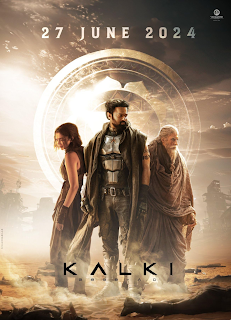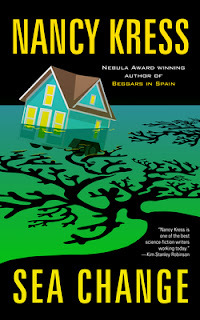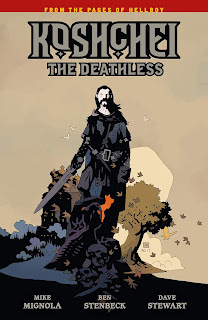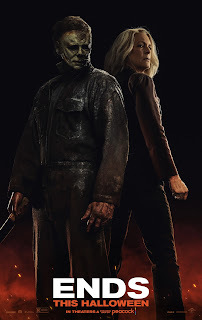Stephen Theaker's Blog, page 11
July 12, 2024
Ormeshadow, by Priya Sharma (Tordotcom) | review by Stephen Theaker
 This review previously appeared in TQF69 (April 2021).
This review previously appeared in TQF69 (April 2021).Bookish boy Gideon and his parents John and Clare are forced by reduced circumstances to leave Bath and return to the family sheep farm. Bath, in Gideon’s view, had been a city of graceful townhouses, where children played with hoops and oil lamps hung like magic lanterns. The children of Ormeshadow, on the other hand, stare at him in baleful silence. The village gets its name from the legend that it was built atop a dragon, but don’t read this expecting The Dragon Griaule. It’s a historical drama, tinged by the possibility of fantasy towards the end. The family farm is run by John’s resentful brother, who is far from happy that his private secretary of a brother has returned, and his children are just as aggressive: they attack Gideon the first time they are left alone with him. Tragedy will result from these wildly different families sharing a single home. I thought this was a well-written book, and the family drama rang true, though a more overtly fantastical story would have been more to my taste. I liked that the chapters had proper titles, which seems to be quite rare in fiction these days, and fellow Richard Herring fans will be interested to learn that a certain amount of stone-clearing is involved. Stephen Theaker ****
July 8, 2024
Kalki 2898 AD | review by Stephen Theaker
 The last time I saw Amitabh Bachchan and Deepika Padukone in a film together, he was complaining about constipation and she was playing his long-suffering daughter, in the charming romantic comedy Piku. This time the stakes are even bigger, as is the budget – this is reportedly the most expensive Indian film ever made. Bachchan plays Ashwatthama, a character from the ancient Indian epic the Mahabharata. In one of several spectacular flashbacks we see his character in battle, firing an arrow of light into a far-away woman’s pregnant belly. For this crime he is cursed by Krishna to live forever, his wounds never healing, until the time when Krishna is due to be reborn, as Vishnu’s tenth incarnation, the Kalki of the title.
The last time I saw Amitabh Bachchan and Deepika Padukone in a film together, he was complaining about constipation and she was playing his long-suffering daughter, in the charming romantic comedy Piku. This time the stakes are even bigger, as is the budget – this is reportedly the most expensive Indian film ever made. Bachchan plays Ashwatthama, a character from the ancient Indian epic the Mahabharata. In one of several spectacular flashbacks we see his character in battle, firing an arrow of light into a far-away woman’s pregnant belly. For this crime he is cursed by Krishna to live forever, his wounds never healing, until the time when Krishna is due to be reborn, as Vishnu’s tenth incarnation, the Kalki of the title.An animated title sequence then sweeps us through all the cruelties of our history and into a ruined, drought-stricken future. The rest of the world is dead and the last drop of water in the Ganges will soon be gone. Padukone’s character has no name at first, just a serial number: SUM-80. At the end of the world, few women are fertile, and those with potential are taken to a lab for implantation. If they were being used for breeding, that would be bad enough, but the women and babies are being juiced mid-pregnancy to produce a life-extending serum for a wizened dictator, the Baron Harkonnen-ish Supreme Yaskin (Kamal Haasan). SUM-80 is hiding her pregnancy, not knowing her baby might be the reincarnation of Vishnu predicted six thousand years before.
The third main protagonist and his robot were introduced in a fun little computer-animated prequel on Amazon Prime, B&B: Bujji and Bhairava, which was my first clue that the film wouldn’t be as dour as it looked from the trailer. Bhairava, played by Telugu star Prabhas of Baahubali fame, is a beefy, cheeky Han Solo type, if Han didn’t have Chewbacca to act as his conscience. Living in Kasi, formerly Varanasi, the world’s last and first city, he is a bounty hunter, desperate to earn his way into the floating Complex, where the rich live in luxury. A flashback shows him sneaking in for the film’s one song and dance number before being caught and kicked out. In the cartoon and film, we see Bhairava do a bit of bounty hunting and fighting, before eventually getting dragged against his will into the main storyline. (He’s not on screen anywhere near as much as one might expect.)
I was looking forward very much to this film, ever since I saw the trailer, and it was just as enjoyable as I expected, especially after the interval, when it took off the handbrake and slammed down hard on the pedal. Like some other Indian blockbusters I’ve watched recently (for example the brilliant Leo, heavily inspired by History of Violence), it feels like a patchwork of earlier movies: Dune, Mad Max: Fury Road, Flash Gordon, The Matrix, etc. It looks like a Zack Snyder film but in its plot and sense of humour reminded me more of The Fifth Element. When the twelve foot tall Ashwatthama went into battle to protect SUM-80, it was like seeing Gandalf fight against a mech! Which is to say, it may be a patchwork, but it’s a patchwork of things I love, and highly imaginative in its own right too.
The audience I was with enjoyed it even more than I did. The cinema was packed, and they frequently applauded, whistled and cheered, sometimes for cameos, for example by the directors Ram Gopal Varma and S.S. Rajamouli, and at other times for revelations of characters having returned from the Mahabharata. It was like being back in the cinema for the “No sir, all thirteen!” moment in The Day of the Doctor, over and over again. I wish I had waited forty minutes or so to watch the Telugu version, though, rather than watching a Hindi showing. Although some scenes were reportedly reshot in Hindi, it was pointless losing the original voice performances for no benefit to my understanding. Even with subtitles I may have missed a lot, given that the English subtitles were sometimes inaccurate even for the English-language dialogue.
For such a long film – after an 8pm screening I left the cinema at ten to midnight – it leaves a lot undone, rather like the first two Rebel Moon films, but it’s hard to complain when it ends with a series of spectacular battle sequences. It’s full of fun supporting characters, my favourite being feisty rebel Kyra (Anna Ben). The special effects are superb. We’ve come a long way from the days when Indian films were renowned for being filmed on a shoestring in a rush. Kalki 2898 AD puts down a real marker, showing that the subcontinent, and specifically this talented director Nag Ashwin and his team, can produce science fiction blockbusters every bit as spectacular as those made in Hollywood. Maybe it isn’t an absolute classic, but it’s great fun and it strongly suggests a classic is on its way. I’ll be first in line for the sequel, albeit at a daytime screening. Stephen Theaker ****
July 5, 2024
Sea Change by Nancy Kress (Tachyon Publications) | review by Stephen Theaker
 This review originally appeared in Interzone #286 (March–April 2020).
This review originally appeared in Interzone #286 (March–April 2020).Quite a difficult book to review without spoilers, since it's as slow as its protagonist to trust the reader with any information, Sea Change begins with a self-driving house holding up the traffic, and only gets more mysterious from there. Renata knows what the teal paint on its window sill means: the house belongs to a member of the Org. She uses her electronic key to gain access, and investigates. There's no one inside, not even a corpse, though she suspects foul play. She nabs a toothbrush for DNA testing and bluffs her way out past the police.
This intriguing story happens in 2032, but there are also flashbacks to 2010 and 2011, when she gets back together with an old boyfriend, an actor who will marry her and then go on to be very famous, while leaving her to raise the son they had together. Back then was also when the Catastrophe began, though no one realised it at the time. The reader doesn't discover the precise nature of the Catastrophe until halfway through the book, but we know it had tragic consequences for Renata's family, and that she is trying to do something about it.Hence her involvement with the Org, a group of scientists and their allies working in secret to do what they feel must be done to save our overheating planet. Sometimes the world doesn't know what's best for it, she tells us. The Org is considered to be a terrorist organisation by the Department of Homeland Security, and those caught serve lengthy prison sentences. In that secret life she goes by the name of Caroline Denton, and uses a chess club as a cover for clandestine meetings.
While this might sound like what you might get from a collaboration between Philip K. Dick and John Brunner, Renata isn't on drugs or at all paranoid. She's clear-sighted and right to be careful, and she's conscious of the risks involved in her group's actions. It makes for a tense and enjoyable sf thriller, one unafraid to address difficult and urgent questions, where the reader can only hope, as Renata does, that she is doing the right thing, and that she'll come out of it alive. Stephen Theaker ****
June 28, 2024
All That Is Solid, by Rosanne Rabinowitz (Eibonvale Press) | review by Stephen Theaker
 This review was originally written in September 2020 for a previous iteration of the British Fantasy Society website, and then appeared in TQF69 (April 2021).
This review was originally written in September 2020 for a previous iteration of the British Fantasy Society website, and then appeared in TQF69 (April 2021).A pair of female friends, a Polish designer and a formerly East German bookkeeper, are living in London shortly after the UK voted to leave the European Union. Over the course of twenty-eight pages we see the impact of our collective decision on their lives: harassment from yobs on buses, work drying up, and fears about the future, though we also hear about people who stand up for them, and who help a shopkeeper after an arson attack. It’s all getting to Gosia, and Ilona thinks she might benefit from seeing a therapist. The therapist suggests expressing her feelings through art, with peculiar consequences.
It’s worth noting that the fantastical elements in this slipstream story are quite limited, and could be explained away quite easily. Also, note that it has been previously published, in The Scarlet Soul: Stories for Dorian Gray, edited by Mark Valentine (Swan River Press, 2017), so don’t buy it if you are one of the 300 people who already have that limited edition book. And it’s expensive for such a short book, especially in hardback. Those points aside, this is a compassionate and sensitive portrayal of what it has been like for our friends from the continent in recent years.I was interested most by the nature of Gosia’s art: “It looks alive, as if something vital runs through that wire. Jagged veins of iron, filled with unknown substances. She’s not sure it would be blood.” The story itself might have been more to my taste if it had begun where it ended, and told us what happened next to everyone involved. But that’s not what it is; it’s not about exploring the implications of a weird event, it’s about character and the way character is affected by circumstances, and the conclusion is an expression of all that. What it does it does well; I thought it was good. Stephen Theaker ***
June 26, 2024
Bludgeon Tools: Splatterpunk Anthology edited by K. Trap Jones (The Evil Cookie Publishing) | review by Douglas J. Ogurek
 Tool-themed visceral horror anthology hits the nail on the head in some parts, strikes a thumb in others.
Tool-themed visceral horror anthology hits the nail on the head in some parts, strikes a thumb in others.This splatterpunk anthology features stories of extreme violence enacted by tools. It’s mostly the usual suspects like hammers and saws, but there are also a few surprises. Characters range from cavemen wielding primitive weapons (“Sticks and Stones” by Christine Morgan) to students learning about torture techniques through remote instruction (“Online Learning” by Vic Kerry). Several stories involve women using phallus-like tools to exact revenge on men.
Some entries by lesser-known authors enticed me to purchase more of their work. Conversely, I researched other authors in this anthology to avoid ever attempting to read something by them again. Their stories, limited in conflict and conversation, come across as amateur. The book also suffers from spelling mistakes and typos – at times, it’s enough to pull the reader out of a story.
Well-known splatterpunk authors Kristopher Triana and Matt Shaw bookend the anthology with equally gruesome stories. In Triana’s “Hammer Time”, call girl Cassie visits a wealthy artist with piercings and tattoos covering his body. A tool aficionado (and a masochist), he has an idea for his ultimate work of art. It’s hard to write a story like this with the intent of being serious, but Triana pulls it off concisely and brutally.
Despite its problems with typos and tense, Matt Shaw’s “Smash It” offers a highly original, graphic depiction of violence that makes the reader cringe and laugh. After a bad experience with acid, the protagonist thinks his penis is encouraging him to violate and kill women. He decides he needs to take care of the problem.
Stephen Kozeniewski’s “Tool Story”, the anthology’s most original entry, is written from the perspective of three tools used by a man who tortures people for information. Typically, anthropomorphic stories are intended for children, but Kozeniewski’s ultraviolent take results in humour and cleverness.
In Vic Kerry’s “Online Learning”, an instructor delivers a remote course on torture as if he’s delivering a biology lesson about root systems. His clinical presentation of the subject matter combined with the students’ enthusiasm about using their “volunteers” to do heinous things makes for an amusing read.
Ola, the protagonist of Jonathan Butcher’s “Drilldo”, decides to take her fetishes into her own hands after she has a bad experience with a dominant who calls himself Dr Surly. She does so after inserting a power drill (handle first) into a tight place. The story appears to be headed down the typical extreme horror path of abusing women, but it twists like a drill bit.
The concept of a musician killing people on stage has been done before, but maybe not as funnily as in Antoine Cancer’s “Jesus of Jim Beam”. The story reflects the punk rock mentality by saying “f-- you” to the whole tool theme. There really aren’t any tools... or maybe the musician is the tool. Notable is the audience members’ response to the killing spree – they’re not overly impressed. It’s a commentary on being desensitised.
Bludgeon Tools reinforces a theory about splatterpunk stories: although humour is not a requirement for such fiction, considering the over-the-top nature of the stories, humour often proves to be the best route. Douglas J. Ogurek ***
June 21, 2024
New Suns: Original Speculative Fiction by People of Color, edited by Nisi Shawl (Solaris Books) | review by Stephen Theaker
 This review originally appeared in Interzone #281 (May–June 2019).
This review originally appeared in Interzone #281 (May–June 2019).When asked about the lack of diversity in their books, English anthology editors all too frequently declare that the quality of the individual stories is all that matters. But if every story had the same plot and the same theme their individual quality would do nothing to stop the anthology from being very dull. Excellent books like We See a Different Frontier and The Apex Books of World SF have shown how diversity of contributors contributes to the quality of an anthology, not least because it tends to contribute to variety in the stories.
The stories in this new anthology address important and urgent themes, such as the environment, colonialism, digital privacy, social inequality and exploitation, and they make good points about them. There are more female contributors than male, and the contributors are from a variety of ethnic backgrounds. It has an exuberant foreword by LeVar Burton of Star Trek: The Next Generation, who declares “I am a huge fan of science fiction!” And it has a beautiful golden cover by Yoshi Yoshitani. All of this was very appealing. Unfortunately, as this book demonstrates, such admirable qualities are not sufficient in themselves to produce a great anthology.The best story by far is “The Robots of Eden” by Anil Menon, which outshines the rest in ideas and characterisation. The narrator has a device embedded in his head to regulate emotions, as does the wife who is leaving him for another man, and the young daughter trying to cope with it all. Whenever the unreliable narrator starts to feel sad, something clicks in his brain and he feels just fine. We are able to see the peculiar mood swings of which he is unaware. It takes being grown-up about a break-up to a new, psychopathic level, and is quite painful to read.
The daughter becomes upset enough to run towards a busy road; luckily she is stopped, but the children in other stories aren’t so lucky: despite the cover and title, this isn’t the optimistic Afrofuturist anthology some readers might have expected, and in fact it’s closer to horror in many places. In “The Shadow We Cast Through Time” by Indrapramit Das, a toddler wanders into a tower on a dangerous new world and is transformed into the first of a new race of demons, while “Give Me Your Black Wings Oh Sister” by Silvia Moreno-Garcia is a brief story about a baby-killer.
The stories without dead children rarely lighten the mood. Steven Barnes imagines how euthanasia tourism might be advertised in the scabrous “Come Home to Atropos”, while Darcie Little Badger writes in “Kelsey and the Burdened Breath” about a woman who uses the spirit of a dead dog to hunt trapped souls; it’s readable in a Dean Koontz kind of way, but the climactic action happens off-page.
Endings are not the book’s strong suit. In “The Fine Print” Chinelo Onwualu writes about Nuhu, who made a deal with a djinn for a fox wife, in a world where wishes have been incorporated, and now has to hand over their first child. Nuhu spends three days deep in thought, leading the reader to expect clever rules lawyering, but instead his terribly unsatisfying plan is just to ask nicely if he can keep his son.
“The Virtue of Unfaithful Translations” by Minsoo Kang is similarly underwhelming. It has a good idea: two translators edit the intemperate edicts of their respective rulers to bring about peace. But after telling us that story, it tells us the same story again in more detail, and then ends with an exculpatory section that feels as if it were written in response to editorial criticism. The same goes for a bit about fatphobia in “One Easy Trick” by Hiromi Goto, in which a woman’s belly fat goes for a stroll, exactly like the adipose from Doctor Who.
For a short anthology, it was a struggle to get through: every listless story was a potential jumping-off point. And for a book from a British publisher, it feels very American. There are no stories, for example, from black or Asian writers from the UK. At least two-thirds of the contributors were either students or instructors at the Clarion West Writers’ Workshop, including the editor, and her afterword says that she “never even got to issue a public call for stories because I received plenty merely by asking the writers of color I personally know”. Unfortunately, that shows: though there are very good writers involved, these don’t feel like stories that had to fight their way into this anthology. Stephen Theaker **
June 14, 2024
Koshchei the Deathless, by Mike Mignola and Ben Stenbeck (Dark Horse) | review by Stephen Theaker
 This review previously appeared in TQF67 (July 2020).
This review previously appeared in TQF67 (July 2020).This Hellboy spin-off, a graphic novel written by Hellboy creator Mike Mignola, focuses on Koshchei the Deathless. He is a character from Eastern European folklore who appeared briefly in Hellboy as the servant of Baba Yaga, the Russian witch who lives in a house with chicken legs.
In a pub on the shores of Hell, Koshchei tells Hellboy the tale of his miserable and almost everlasting life. Their previous encounters are worked into the storyline, so new readers shouldn’t find it too difficult to follow. Beaten almost to death as a talented young soldier, Koshchei was restored by a dragon, after promising to work for nine years in the dragon’s castle. That service complete, he goes out into the world with the dragon’s blessing, only to come, once again, to a bloody end. This time the resurrection is permanent, and so begins a life that would have been better not lived at all.With comics one can sometimes forget to read the art as well as the words, and that’s especially important in Hellboy comics, where the art often takes the lead in telling the story. Ben Stenbeck’s art here performs that duty admirably, being beautiful and horrifying as required, but always characterful, and the action is clear. His sketchbook section will provide young artists with a useful insight into the life of a working artist, for example how he will often have several runs at a design before getting it right, and how that process is a collaboration, involving input from the writer and editor. Stephen Theaker ****
June 7, 2024
The Map of Salt and Stars by Jennifer Zeynab Joukhadar (Orion) | review by Stephen Theaker
 This review originally appeared in Interzone #275 (May–June 2018).
This review originally appeared in Interzone #275 (May–June 2018).This novel tells the story of a twelve-year-old refugee, Nour, as her family flees war-torn Syria in 2011, while she tells and finds strength in the story of Rawiya, a girl crossing the same territory with a renowned map-maker in the twelfth century; for safety, both girls disguise themselves as boys while travelling. Like the main character, the author is American with a Syrian mother, but the book isn’t based on her own experiences.
Nour was born in the US, and her family lived in New York, but work was short and money was tight, so after the death of her father they move to the city of Homs, in western Syria, where her mother was born. Nour didn’t want to leave New York, nor did her sisters Huda and Zahra. They were particularly worried about the protests taking place in Dara’a, but their mother is sure that things will calm down. As it is, they have only been there for a few months when the Syrian civil war begins.At first, the noise of bombing is distant, happening elsewhere, like lightning – “as long as it’s far away, you aren’t afraid of getting struck” – and even then their mother ignores advice to leave. But one day the bombs hit their street, and every house, including theirs, is flattened. Luckily everyone in Nour’s family survives, though her sister Huda is badly wounded. They travel from Syria to Jordan, then from Jordan to Egypt, facing disaster at every turn, reliant on the kindness of others who are often in equal distress.
The story Nour tells herself is one her late father told her every night, about Rawiya, who runs away from home and dresses as a boy to travel with a famous mapmaker: Abu Abd Allah Muhammad al-Idrisi, who lived from about 1100 to 1165. His patron is King Roger the Second of Palermo, for whom he intends to create “a more complete map than has ever existed before”. That will take them on a journey around Asia Minor, to the lands of Anatolia, Bilad ash-Sham, and the eastern Maghreb, and into encounters with the Fatimids and Crusaders of history, as well as the rocs, serpents and capricious caliphs of the Arabian Nights.
The book has a very regular structure, each chapter beginning with the adventures of Rawiya and Al-Idrisi then, after a cliffhanger, shifting to Nour and her family. The risk of such a structure is that the reader engages much more with one and comes to begrudge the other. In this case, although I would happily have read much more of the fantastical twelfth-century story, the contemporary story was also gripping, and both were equally emotional.
Nour’s synaesthesia does give the present-day story a bit of a fantasy feel (Huda’s laugh is pink-and-purple; a car’s tyres make a grey hiss; a bomb is a dark-brown boom; an ambulance’s siren is a pinky-red spiral), as well as creating a distancing effect that forces us to peer beyond her perceptions and thus be hit with events ourselves. Also, the family’s prayer rug, saved from their destroyed home in Homs, almost acts as a magic carpet, with them for the whole journey.
When the family gets to lie down on it, even in the worst of circumstances, like camping out behind a ferry depot, waiting to sneak on to a boat, and listening to machine gun fire in the night, you feel so happy for them getting that moment of rest. It reminded me of a favourite quote from Brian Aldiss: “Whatever terrific events may inform our lives, it always comes to that in the end; we just want to lie down.”
I don’t think it will be of quite as much interest to fantasy readers as John Barth’s similarly double-stranded Arabian adventure, The Last Voyage of Somebody the Sailor, but it’s still a very good book, and an important, eye-opening one too, for how successfully it creates empathy for refugees, using its fictional examples to encourage us to think of, as Nour says, “so many families in the world with no place to go, so many people tired of hurting but with no place to sleep”.
As I write this [2018], there have just been airstrikes on Damascus and Homs by France, the UK and the US, a response to the apparent use of chemical weapons by the Syrian government. It must be dismaying for the author that her book remains so topical as its release date approaches. As Rawiya says bitterly after a calamity in medieval Palermo, “Those caught in between are the ones who get hurt.” Stephen Theaker ****
June 3, 2024
Halloween Ends | review by Douglas J. Ogurek
 Halloween ends? Let’s hope so.
Halloween ends? Let’s hope so.Whenever a film or television scene involves a man positioned behind a woman and showing her how to hit/shoot/operate something, my cliché radar goes off – a bad sign for the rest of the programme. This radar bleeped rapidly in Halloween Ends when troubled protagonist Corey (Rohan Campbell) sat behind love interest Allyson Strode (Andi Matichak) and showed her how to operate a motorcycle. Vroom vroom. Dumb.
In the original Halloween (1978), Michael Myers, with his jumpsuit, heavy breathing, expressionless white mask, economic movements, and unexplained drive to kill Laurie Strode (Jamie Lee Curtis), carved out a new kind of horror film. He not only spawned countless knockoffs, but he also reappeared in eleven subsequent films within the franchise. Though I haven’t seen all of them, I was intrigued by the bold claim inherent in Halloween Ends (2022) – that the franchise would draw to a close. After watching it, I hope it does – the movie had more flaws than a months-old pumpkin.
The year is 2019, and Myers’s decades-long psychological grip on the provincial residents of Haddonfield, Illinois remains strong. Nobody is more aware of the serial killer’s spell than Laurie, who continues to live there with her adult granddaughter Allyson while writing her dull memoir consisting of meaningless talk about evil.
The movie does offer an intriguing opening sequence in which Corey, who hopes to study engineering, babysits a bratty boy. What happens derails Corey’s life and earns him a negative reputation among the townsfolk. This, coupled with his overprotective mother and detached father, causes Corey’s life to spiral out of control.
After witnessing Corey get assaulted by younger higher school students, Laurie decides he’d be a good match for her granddaughter. Not very perceptive. Allyson, remarkably well-adjusted despite her parents being killed by Myers, wants to help Haddonfield’s zero-prospect scapegoat overcome his problems. Corey, now working at his father’s mechanics shop, is going down a dark path thanks to the influence of a certain figure he encounters.
The film, laden with the typical clichés and foreshadowing as conceived by a child, gets increasingly ridiculous until it culminates in an ending worthy of a musical – it seemed as if the characters were about to break into song.
One of the only interesting aspects of Halloween Ends is that the high schoolers who repeatedly antagonise Corey are not the expected jocks or punks, but rather members of the marching band. It shows how pathetic Corey is. Douglas J. Ogurek **
May 31, 2024
Kill Shakespeare, Vol. 1: A Sea of Troubles, by Conor McCreery, Anthony Del Col and Andy Belanger (IDW) | review by Stephen Theaker
 This review previously appeared in TQF67 (July 2020).
This review previously appeared in TQF67 (July 2020).Written by Canadians Conor McCreery and Anthony Del Col, with art by Andy Belanger, this book collects the first six issues of the comic book.
It begins in Denmark, after Hamlet has mistakenly killed Polonius. As in Act IV of the play, he is sent on a ship to England with Rosencrantz and Guildenstern. In this version, Rosencrantz reveals the treacherous letter to Hamlet, but it saves him not since he is killed when the pirates attack and sink the ship. Hamlet washes up in the kingdom of Richard III, who declares him the Shadow King, meant to fulfill a great prophecy. He is supposedly to free all these characters from the tyranny of William Shakespeare, their writer and god, by stealing his quill. In truth, Richard III and his allies – including Iago, Lady Macbeth and the witches – want the bard dead.
I found this quite hard going, with dialogue that never felt as natural as it does in Shakespeare’s plays. And the premise didn’t work for me. Fables drew on timeless fairytale characters, and The League of Extraordinary Gentlemen used characters from the appropriate time period for each adventure. The smushing together of stories and historical figures here makes much less sense. Who are these people when you take them out of time and context? And it got my goat up immediately with a foreword suggesting that Shakespeare didn’t write the plays. I liked the chunky art style, though, and Falstaff was good fun. Wasn’t keen on wife-murdering Othello as a hero, but Juliet made a good resistance leader. Stephen Theaker ***


